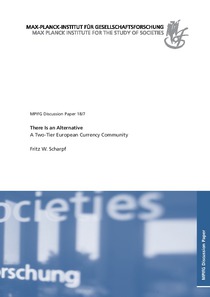There is an alternative: a two-tier European currency community

Max-Planck-Institut für Gesellschaftsforschung, Köln
MPIfG - Köln
2018
17 p.
EMU ; monetary policy ; EU economic governance
Discussion Paper
18/7
EMU and International monetary system
English
Bibliogr.
"The performance of EMU member economies is shaped by different and structurally entrenched "growth models" whose success depends on specific macro-regimes – restrictive for export-led growth, accommodating for demand-led growth. These two types of models cannot be equally viable under a uniform macro regime, and their divergence threatens the stability of the EMU. The present attempt to enforce structural convergence in the euro¬zone appears economically ineffective and lacks democratic legitimacy on the national and the European level. Assuming that complete integration in a democratic federal state is presently unattainable, the paper presents the outline of a more flexible European Currency Community that would include a smaller and more coherent EMU and the member states of a revised "Exchange Rate Mechanism II" (ERM) whose currencies are flexibly linked to the euro. It would restore the external economic viability of autonomous domestic policy choices, and it would protect its members against speculative currency fluctuations. "
Digital
The ETUI is co-funded by the European Union. Views and opinions expressed are however those of the author(s) only and do not necessarily reflect those of the European Union or the ETUI.